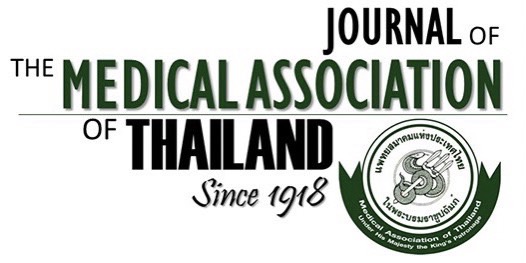Antigenotoxic Activity of Thai Sangyod Red Rice Extracts against a Chemotherapeutic Agent, Doxorubicin, in Human Lymphocytes by Sister Chromatid Exchange (SCE) Assay In Vitro
Treetip Ratanavalachai PhD*, Sumon Thitiorul MS**, Sermkiat Tanuchit MS***, Chalerm Jansom MS***, Sakultala Uttama MS****, Arunporn Itharat PhD*****
Affiliation : * Division of Biochemistry, Preclinical Science Department, Faculty of Medicine, Thammasat University, Pathumthani, Thailand ** Division of Anatomy, Preclinical Science Department, Faculty of Medicine, Thammasat University, Pathumthani, Thailand *** Reseach center, Faculty of Medicine, Thammasat University, Pathumthani, Thailand **** Graduate Program, Faculty of Medicine, Thammasat University, Pathumthani, Thailand ***** Division of Applied Thai Traditional medicine, Faculty of Medicine, Thammasat University, Pathumthani, Thailand
Background : Nowadays, anticarcinogenic potential of pigmented brown rice and rice bran varieties have been increasingly
stated. However, their mechanisms of action are still inconclusive. One of which might be their antigenotoxic activity that no
study in human cells was reported before.
Objective : To evaluate the antigenotoxic activities of Thai Sangyod red rice extracts against a chemotherapeutic agent,
doxorubicin, by sister chromatid exchange (SCE) assay in human lymphocytes in vitro.
Material and Method: Two fractions of water-soluble of Sangyod rice extracts were used: (i) the washed water extract of
brown rice (WWBR) and (ii) the water extract of rice bran (WERB). Human lymphocytes were pretreated with each extracts
at concentrations of 6.2, 12.5, 25, 50 and 100 μg/ml for 2 h followed by a genotoxic agent, doxorubicin (DXR) (0.1 μg/ml) for
2 h. SCE level, mitotic index (MI) and proliferation index (PI) were evaluated. Statistical analysis by Dunnett’s t-test was
performed.
Results : The results indicated that the pretreatment of WERB fraction only at concentration of 6.2 μg/ml could significantly
decrease SCE level as compared to that of the DXR treated alone (p < 0.05). On the other hand, WERB fraction at other
concentrations and all WWBR pretreatments could not. In addition, there was no significant difference in MI and PI levels
between all pretreated extracts as compared to the DXR treated alone.
Conclusion : Our data revealed that WERB pretreatment only at specific low concentration of 6.2 μg/ml possessed the
antigenotoxic potential against genotoxic damage but not anticytotoxic induced by DXR. Further work is still needed to clarify
more the antigenotoxic and anticytotoxic potentials from other fractions of Sangyod rice extracts.
Keywords : Oryza sativa, Sangyod red rice, Doxorubicin, Sister chromatid exchange (SCE), Antigenotoxicity



